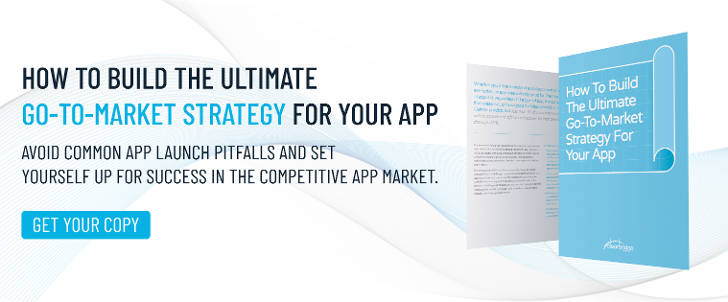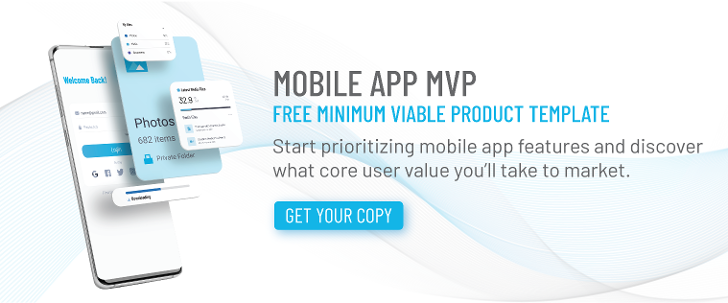The point of building a minimum viable product (MVP) app is to eventually build it up into a full-scale solution. But this is not an easy, or quick task. In order to successfully achieve this goal, you’ll need a complete plan, knowledge of the market, and an understanding of how scaling mobile apps works.
To justify all the time, effort, and investment that went into building your MVP, it is critical that you understand how to scale it properly. Here, we’ll discuss not only some of the challenges businesses face when it’s time to scale their MVP, but also the best tips for moving forward to a successful, full-scale product.
MVP Scaling Challenges
Starting off with an MVP is not only easier than trying to produce a complete product from scratch, it’s a mobile application development best practice. This is thanks to the fact that MVPs are simple to build, test, and deploy. That said, when it comes time to expand your solution, making changes and fixing problems can become more difficult.
Here are a couple of the common challenges associated with scaling up an application:
Loss of Focus
Making sure workers and stakeholders are in agreement when it comes to development and project strategy is always difficult. But it tends to become increasingly difficult as an MVP is expanded. In the effort to provide solutions for customers, and to entice new users with exciting features, the vision that drove the MVP can be lost. It is up to the development team to keep the project focused on its expressed goals.
Development Driven By Sales
Another roadblock when it comes to scaling mobile apps can be an overly pushy sales department. This occurs when sales tells the development team, “I need you to include this specific feature immediately so I can close this big deal.”
This may be a powerful argument for those whose primary concern is the bottom line. But it can cause long-term application planning to go off the rails.
5 Tips for Scaling Mobile Apps Beyond the MVP
The entire point of creating a minimum viable product is to validate the goals you have for your application. That said, the real work begins after your MVP has been built. That’s because it’s now time to scale it up to something users actively seek out to solve their problems. Here are five of the top tips to help you with scaling mobile apps beyond your MVP.
Identify Gaps Through Customer Feedback & Data Collection
Often, the best feature ideas come from users themselves. When people start using your MVP app, ask them what could be improved. This feedback is extremely valuable and one of the smartest and most effective ways to make your app better. This means you’ll need proper support tools and services so your users can request help when they need it, and provide this critical feedback. It’s often this quality of support, coupled with a fantastic user experience that will set you apart from the competition. Make it as easy as possible for your users to get – and provide – help and guidance.
What’s more, it’s important to respond to all user criticisms, both good and bad. Users that offer negative feedback are actually providing you with valuable information by pointing out issues that you can correct as you scale your MVP.
Of course, active feedback isn’t the only way to learn from your users. Customer input can also be captured through quantitative analytics and research – both valuable tools for a successful scaling strategy. As you build up from MVP to full-scale solution, keep track of user behaviors, interactions, and drop-offs at each touchpoint of your app. This will help you find features that might need to be added, removed, or simply improved.
Focus On Your App’s Goals
Nothing – not expensive marketing, strategic pricing, or flashy features – can save a bad product. That’s why it’s so critical to focus on the solutions you want your app to provide through effective mobile application development. If your app suffers from bugs, poor customer support, or bad design, the cards are already stacked against it. Users’ expectations are only growing more and more discerning. Therefore, creating a great mobile app that does what you set out to make it to do should be your priority.
As previously discussed, user feedback and research is a critical step in this process. As is the implementation of various tools to accurately measure and analyze your app’s performance. All this helps to improve your app’s functionality, and in turn, makes it more successful on the market.
In order to deliver on your app’s solutions, you’ll need excellent mobile front- and back-end. That means working with experts in mobile application development is critical for success. You won’t want to push out new features before they’re ready to go. That only creates issues and leads to drops in quality and user satisfaction.
The Advantage of Cloud Computing
One of the biggest leaps forward when it comes to scaling mobile apps is the advancement of cloud computing. As the cloud has become more effective, cloud services are able to quickly widen in scope for short experimentation periods. As you receive useful consumer feedback, cloud computing makes adding functionality simple and convenient.
This is because cloud computing lowers the burden of the device your app is running on, thus easing long-term capacity planning. That means more focus on implementing and improving the core functionality.
What’s more, once your scaled app becomes available, cloud services can help improve your margins and continue scaling for even more growth.
Test & Analyze, Then Test & Analyze Again
The best approach to scaling mobile apps emphasizes continuous improvements to the product. That means that quality control, quality assurance, and testing should all be integral to the process. Every metric that you tracked from your MVP launch, onward – traffic, abandoned shopping carts, conversions, social interactions, user comments and feedback, etc. – are valuable and continue to be so. With this information in hand, you can perform A/B testing to improve both the customer journey and the user experience – not to mention the application itself. A thorough analysis and implementation of these results contributes to a continuously upgraded application, improved UX, and better overall user satisfaction.
Implementing a Pricing Strategy
Often, the subject of pricing comes up during the development of the MVP. But your MVP isn’t always the place for this discussion.
The reason for developing an MVP in the first place is to address specific pain points, not to create a slapdash product.
However, users that adopt your MVP may pay for it with the promise that what they spend their money on will be upgraded when your full-solution goes live. In this case, your MVP is a valuable tool to analyze your pricing strategy. Keep track of visitors and conversations. At what price point does the traffic fall off? Studying metrics like these can help you decide on an appropriate pricing structure when your finished product is ready to go to market.
Wrapping Up
Every application takes time to go from MVP to full-solution, and then on to wide-spread adoption by users. The path forward after an MVP launch isn’t always straightforward. That means that having the best team possible on your side from the beginning is critical. But once you have the team and a plan in place, scaling up the mobile MVP app your users already enjoy is much easier!
Keep Reading:
How 5G Apps are Changing Mobile Application Development
How Design Thinking Leads to a Better Minimum Viable Product (MVP)
When is it Time to Find a New Mobile App Development Partner: A Guide for Enterprises






